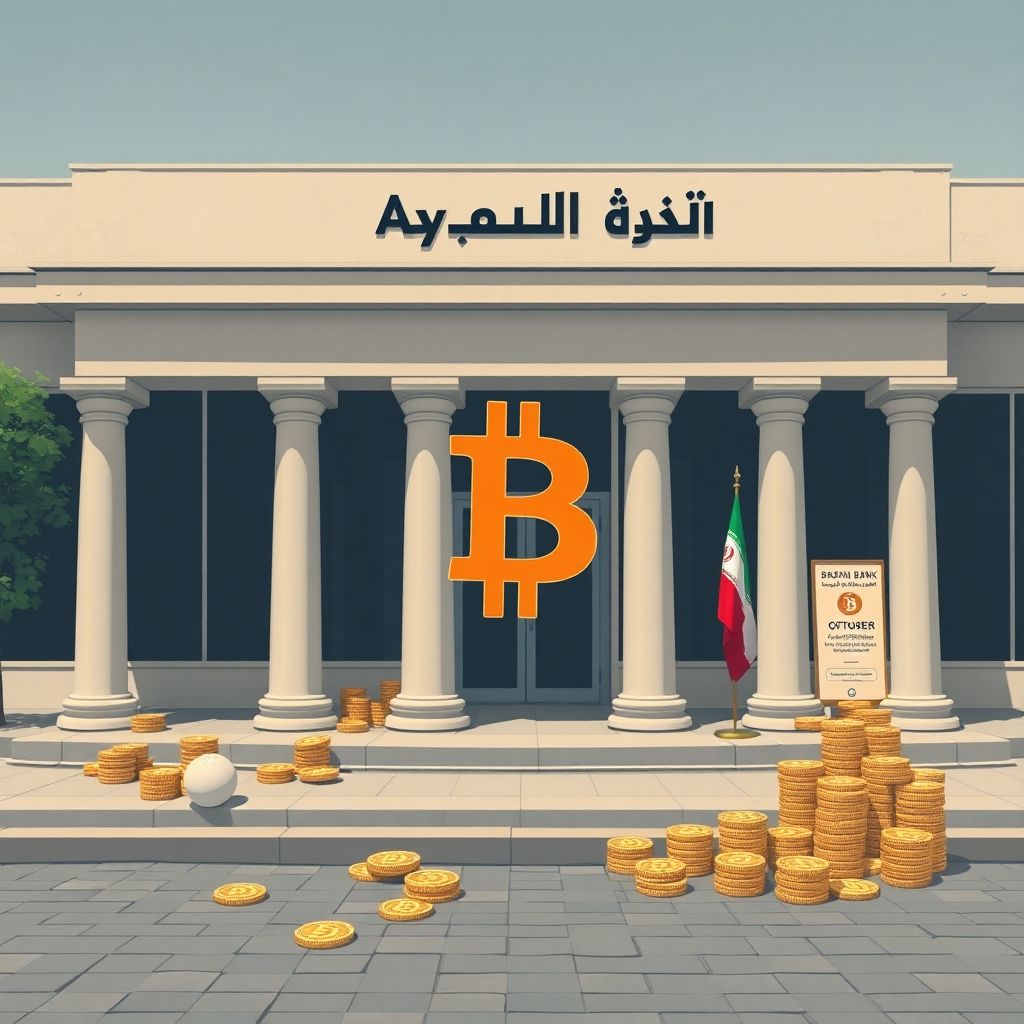Bitcoin’s Early Warnings Confirmed as Iran’s Ayandeh Bank Collapses, Affecting Millions
On October 23, 2025, Iranian financial authorities permanently shut down Ayandeh Bank, once one of the country’s largest private banking institutions. The closure, triggered by massive financial irregularities and deep-rooted mismanagement, has left millions of account holders facing uncertainty and reignited global discussions around Bitcoin’s original purpose — to provide an alternative to traditional banking failures.
A Systemic Failure Unfolds
Founded in 2012, Ayandeh Bank quickly expanded to become a major player in Iran’s financial sector, operating 270 branches nationwide, including 150 in Tehran alone. However, beneath the surface, the bank was teetering on the edge of collapse for years. Regulators uncovered a staggering 5.5 quadrillion rials (approximately $5.1 billion) in accumulated losses, alongside overdrafts totaling 3.13 quadrillion rials (nearly $3 billion). These figures exposed a capital adequacy ratio of nearly -600%, a sign of severe insolvency.
According to financial authorities, over 90% of the bank’s assets were linked to insiders and high-risk construction ventures, leaving its balance sheet dangerously unbalanced. The Central Bank of Iran revoked Ayandeh’s license, citing a critical failure in governance, reckless lending practices, and a pattern of allocating funds to entities connected to its own leadership.
A Nation on Edge
To mitigate the fallout, the Central Bank announced that Ayandeh’s customer accounts and branch operations would be absorbed by Bank Melli Iran, a state-owned institution. From October 25, depositors were promised access to their funds through the new system. Government officials assured the public that deposits would be protected and that most branch employees would retain their jobs.
Despite these measures, anxiety remains high among the bank’s estimated 42 million customers. The sheer size of the collapse and the rapid intervention by the state have left many questioning the long-term stability of Iran’s banking sector.
The Broader Financial Implications
The Ayandeh debacle is not viewed as an isolated case. Regulators hinted that as many as eight additional banks show similar signs of financial distress, raising fears of a wider banking crisis in Iran. The country’s financial system has long struggled under the weight of international sanctions, restricted access to global markets, and a rapidly depreciating national currency.
Analysts warn that assuming Ayandeh’s liabilities could significantly strain the government’s fiscal resources. The move may necessitate increased public spending, tighter regulation, and a potential reevaluation of monetary policy across the sector.
Bitcoin and Crypto Enter the Conversation
The collapse has reignited public interest in alternatives to traditional banking, with cryptocurrency — particularly Bitcoin — emerging as a focal point. While no official data confirms a mass shift, anecdotal reports suggest that some Iranians are turning to digital assets as a safeguard against financial instability and currency devaluation.
For many, the downfall of Ayandeh Bank serves as a stark reminder of why Bitcoin was created: to offer a decentralized and transparent financial system that operates independently of central authorities and banking institutions prone to corruption and mismanagement.
A Shift in Public Sentiment
Though depositors’ immediate priority is accessing their money, longer-term concerns are beginning to shape financial behavior. People are increasingly discussing the potential of holding assets in foreign currencies or cryptocurrencies to protect themselves from future shocks. The trust deficit in the banking system is pushing some to consider decentralized finance (DeFi) solutions and peer-to-peer exchanges as viable alternatives.
Cryptocurrencies as a Hedge Against Economic Instability
Iran’s volatile economic environment, marked by inflation and sanctions-induced isolation, has already made cryptocurrencies an attractive option for some. Bitcoin, in particular, is seen as a digital store of value that is immune to local monetary policy failures. Its decentralized nature allows individuals to bypass traditional financial channels, which now appear increasingly fragile.
In the wake of Ayandeh’s collapse, crypto adoption could accelerate — not just among tech-savvy users, but also among everyday citizens seeking financial security. Mobile wallets, peer-to-peer exchanges, and stablecoins may see a rise in usage, especially if more banks show signs of weakness.
Calls for Reform and Transparency
The Ayandeh case has sparked renewed calls for transparency and structural reform in Iran’s financial sector. Critics are urging regulators to adopt stricter oversight mechanisms, enforce accountability among top executives, and reduce the concentration of assets tied to politically-connected entities. Without such reforms, experts warn, the collapse of Ayandeh could merely be a prelude to broader financial instability.
The Role of DeFi in Future Banking
As centralized financial institutions continue to falter under pressure, decentralized finance platforms may offer a compelling alternative. DeFi protocols allow users to lend, borrow, and trade assets without relying on banks or intermediaries. In countries like Iran, where financial repression and control are high, these platforms provide a level of autonomy that traditional systems cannot.
Educational Push for Financial Literacy and Crypto Awareness
In light of recent events, there’s a growing need for financial literacy programs aimed at educating the public about alternative financial instruments, including cryptocurrencies. With millions affected by the fallout of Ayandeh’s failure, providing access to knowledge and tools to navigate this evolving landscape is more critical than ever.
Looking Ahead
Ayandeh Bank’s collapse is more than a financial event — it’s a warning signal of structural fragility, mismanagement, and the consequences of opaque banking practices. For Iran, it’s a wake-up call demanding immediate reform. For its people, it’s a moment of reckoning and potential realignment toward more resilient, decentralized financial systems.
As trust in traditional banking continues to erode, Bitcoin and other digital assets may not just be speculative tools, but essential lifelines in uncertain times.

